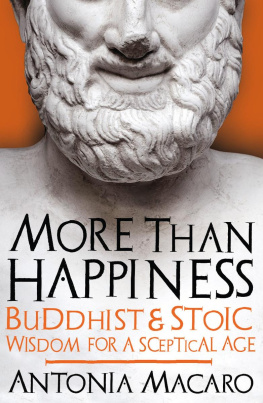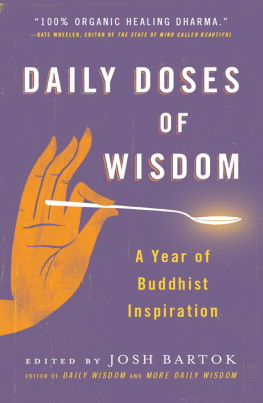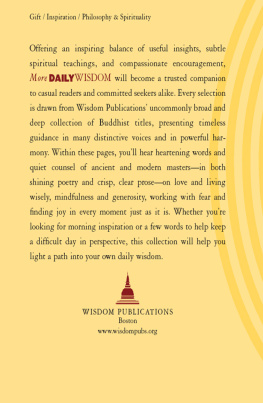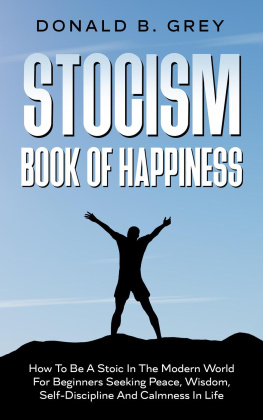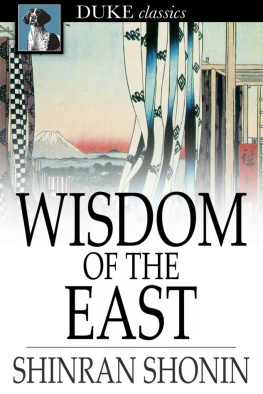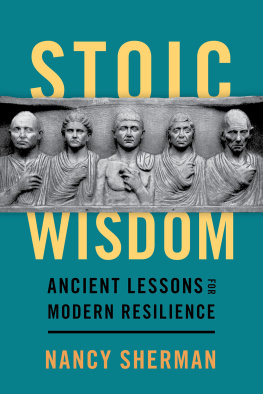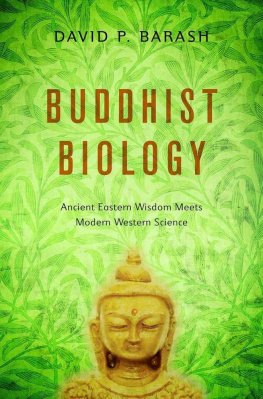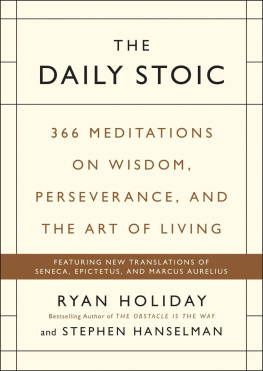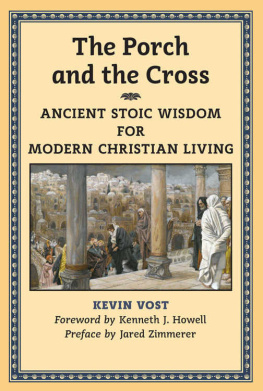Macaro - More than happiness: Buddhist and Stoic wisdom for a sceptical age
Here you can read online Macaro - More than happiness: Buddhist and Stoic wisdom for a sceptical age full text of the book (entire story) in english for free. Download pdf and epub, get meaning, cover and reviews about this ebook. City: London, year: 2018;2017, publisher: Icon Books Ltd, genre: Religion. Description of the work, (preface) as well as reviews are available. Best literature library LitArk.com created for fans of good reading and offers a wide selection of genres:
Romance novel
Science fiction
Adventure
Detective
Science
History
Home and family
Prose
Art
Politics
Computer
Non-fiction
Religion
Business
Children
Humor
Choose a favorite category and find really read worthwhile books. Enjoy immersion in the world of imagination, feel the emotions of the characters or learn something new for yourself, make an fascinating discovery.
More than happiness: Buddhist and Stoic wisdom for a sceptical age: summary, description and annotation
We offer to read an annotation, description, summary or preface (depends on what the author of the book "More than happiness: Buddhist and Stoic wisdom for a sceptical age" wrote himself). If you haven't found the necessary information about the book — write in the comments, we will try to find it.
Macaro: author's other books
Who wrote More than happiness: Buddhist and Stoic wisdom for a sceptical age? Find out the surname, the name of the author of the book and a list of all author's works by series.
More than happiness: Buddhist and Stoic wisdom for a sceptical age — read online for free the complete book (whole text) full work
Below is the text of the book, divided by pages. System saving the place of the last page read, allows you to conveniently read the book "More than happiness: Buddhist and Stoic wisdom for a sceptical age" online for free, without having to search again every time where you left off. Put a bookmark, and you can go to the page where you finished reading at any time.
Font size:
Interval:
Bookmark:
As I was about to finish writing this book, I found myself driving along hedge-lined Devon lanes towards a Buddhist retreat centre, Gaia House. I have been coming here on and off for thirty years or so, attracted by the insights the Buddhist tradition seemed to offer but always questioning, trying to work out whether I could accept the whole belief system or, if not, what I should leave out and why. That journey of discovery had as many twists and turns as my drive, before I felt I could come up with any answers. My relationship with Stoicism followed a similar development.
I am neither a Buddhist nor a Stoic by inclination. The ancient philosopher I feel most in tune with is the more down-to-earth fourth-century Greek thinker Aristotle. But I have come back to Buddhism and Stoicism again and again over the years, despite my difficulties and reservations. Maybe its because their insights seem to get to the heart of our experience of life in a way that other philosophies dont. I believe both traditions contain much daily wisdom that can help all of us to live better lives.
I know I am not the only one to feel like this. These traditions have proved to be durable sources of inspiration for generation after generation. Buddhist schools that originated anywhere between India and Japan have been thriving and growing in the West since the mid-twentieth century. And Stoicism, which flourished first in ancient Greece and then in Rome, has experienced a surprising rise in popularity in recent years. After centuries of attracting small numbers of aficionados, there are now numerous books, blogs, online forums and an annual Stoic Week devoted to it. A Stoic approach to business has been advocated in websites and publications like Business Insider and Forbes. Philosopher Nancy Sherman has explored the relationship of Stoicism to the military in her book Stoic Warriors.
Both traditions have helped to give birth, directly or indirectly and with much shedding of detail, to a number of therapeutic techniques that in recent years have swept through the US and the UK, rapidly spreading to other countries. In particular, Stoicism is one of the inspirations behind Cognitive Behaviour Therapy (CBT), while Buddhist meditation is the source of a range of mindfulness-based interventions that aim to help with various conditions such as chronic pain, stress and depression.
Both Buddhism and Stoicism promise no less than unlocking the door to peace of mind and the end of suffering. Yet this comes at a price. Both are radical systems that ask much of their followers: ultimately, to challenge and curb their attachment to the things of the world. Perhaps their appeal lies precisely in this radical nature. More moderate thinkers like Aristotle and Epicurus, a contemporary of the early Stoics, are not enjoying such a resurgence.
I have struggled with aspects of both traditions. Its not only that they are demanding. They are also inevitably interlaced with antiquated ideas, so it is a challenge to extract a message that is at ease in the modern world. We tend nowadays to adopt a naturalistic outlook, one that seeks to explain the universe without reference to anything supernatural. This seems right: our beliefs should be compatible with our best science, which is thoroughly naturalistic. When we are tempted to tolerate aspects of the Buddhist or Stoic traditions that clash with this naturalistic worldview, we risk taking too much from them. On the other hand, we might take too little if we end up borrowing only a few tips in the service of a conventional notion of happiness, so that the radical content is all but lost. In this book I try to walk a tightrope between too much and too little.
My main aim is to explore what we may extricate that fits in with a naturalistic, questioning point of view, but that is more than just tips on how to be happy, as happiness is not everything. This is why Ive chosen to concentrate on the parts of both traditions that have the potential to make an impact on how we live, but that also stand up to scrutiny and preserve something of their original radical nature challenging rather than indulging received notions of who we are and what our aims in life should be.
Both traditions placed great value on seeing things clearly, so rejecting their more outmoded ideas is actually more faithful to their spirit. As Seneca put it, Our predecessors achieved a great deal, but their work is still unfinished. We should feel comfortable putting aside the doctrines that dont quite square up: freezing them in time is no way to pay homage to the creative thinkers who shaped them.
There are many Buddhisms and Stoicisms; therefore the versions I present in this book are composites. I have focused on early Buddhism partly because I find its relative simplicity most congenial, and partly because it seems more readily comparable with Stoicism. And I have quoted mainly from the Roman Stoics partly because of their emphasis on ethical issues, and partly because only fragments remain of the earlier works. I have made liberal use of quotations from ancient sources of both traditions to let the authors voices speak for themselves.
In light of our profound ignorance of what the Buddha actually said, whenever I write the Buddha says it should be read as the Buddha is reported as saying. I use the Pli rather than Sanskrit form of words, apart from karma and nirvana, which are now terms in common usage.
With huge literatures to deal with, and a short space in which to deal with them, my choice of what to cover has had to be ruthlessly lean, and therefore my presentation is highly selective. I have tried to keep it simple and capture the spirit rather than follow the letter. I am certainly not trying to say anything about what authentic Buddhism or Stoicism should be.
What follows is a personal perspective which has emerged both from my lifelong search and from engaging with the material on how to approach these traditions so as to take what we need from them and not more. Along the way, I highlight many of the strategies advocated in both traditions, and in the concluding chapter I describe the ideas and practices that I think we could all benefit from adopting. I hope to show that with the right approach a wealth of inspiration can be ours.
Seneca 2015, 64.9
Kamma and nibbna in Pli. Pli is the language of much of the earliest Buddhist literature.
There are many lists in Buddhism three refuges, five hindrances, five precepts, seven factors of awakening, ten perfections and so on, not to mention of course the four noble truths and the eightfold path. Only a few of these have made it into my discussion, but for a list of Buddhist lists see Leigh Brasingtons website: leighb.com/listlist.htm. As for the scholarly debates currently ruffling feathers on many of the topics I touch on, clearly it would not have been possible to delve into them.

Bodh Gaya, in the Indian state of Bihar, is nowadays a busy part of the world, full of crowded, noisy temples. Buddhist pilgrims from the four corners come to pay homage to the place where the Buddha is said to have attained his awakening, under a Ficus religiosa subsequently also known as a Bodhi tree. The current tree is just over a century old, although its lineage is supposed to go back to the original tree. We dont really know. The truth is that we dont really know much about the story of the Buddha at all.
The kernel from which the legend of the Buddha grew might go something like this: Gotama, the future Buddha, lived at some point in the fifth century BCE and died sometime around 400 BCE , give or take twenty years. He probably lived at least part of his life in north-eastern India. At that time in India there was an established culture of wanderers and renouncers people who had given up a conventional social role and become mendicants, dedicating themselves to the spiritual life. What this meant exactly was understood differently by different groups, but it generally revolved around ascetic practices and meditative techniques. Gotama left a comfortable background to pursue this lifestyle, sought instruction from teachers and experimented with but ultimately rejected extreme asceticism. Eventually he had an awakening, a powerful transformative experience that led him to establish a small group of followers at first, and then teach all over northern India for many years, dying in old age.
Font size:
Interval:
Bookmark:
Similar books «More than happiness: Buddhist and Stoic wisdom for a sceptical age»
Look at similar books to More than happiness: Buddhist and Stoic wisdom for a sceptical age. We have selected literature similar in name and meaning in the hope of providing readers with more options to find new, interesting, not yet read works.
Discussion, reviews of the book More than happiness: Buddhist and Stoic wisdom for a sceptical age and just readers' own opinions. Leave your comments, write what you think about the work, its meaning or the main characters. Specify what exactly you liked and what you didn't like, and why you think so.

